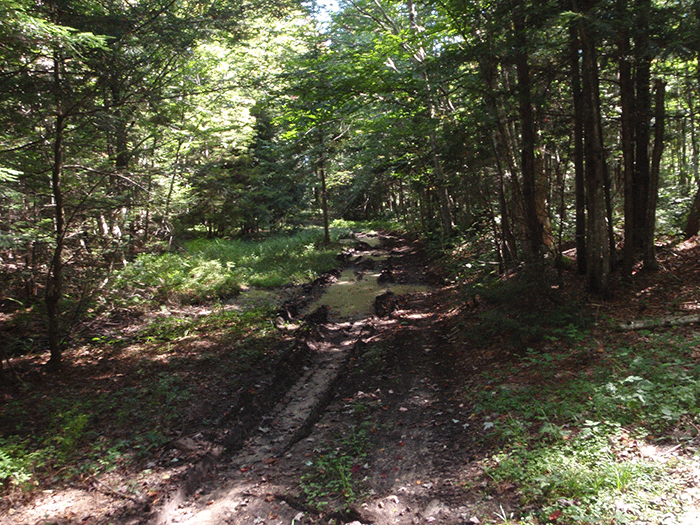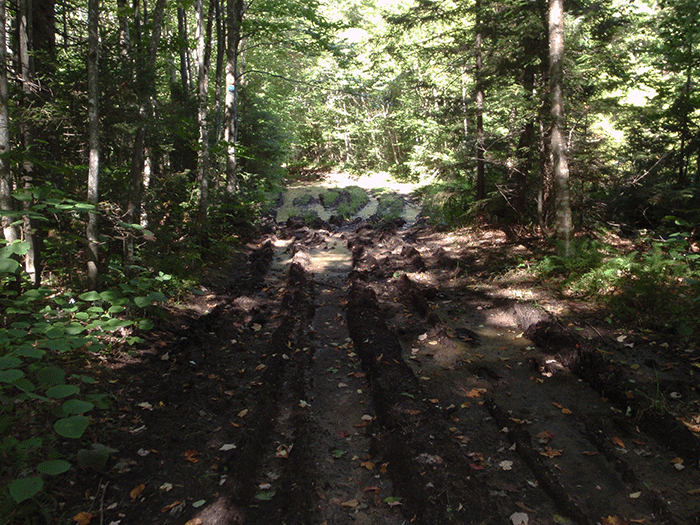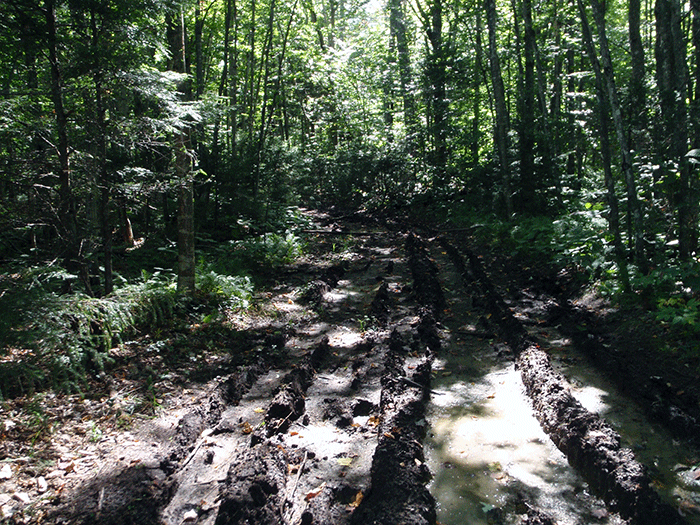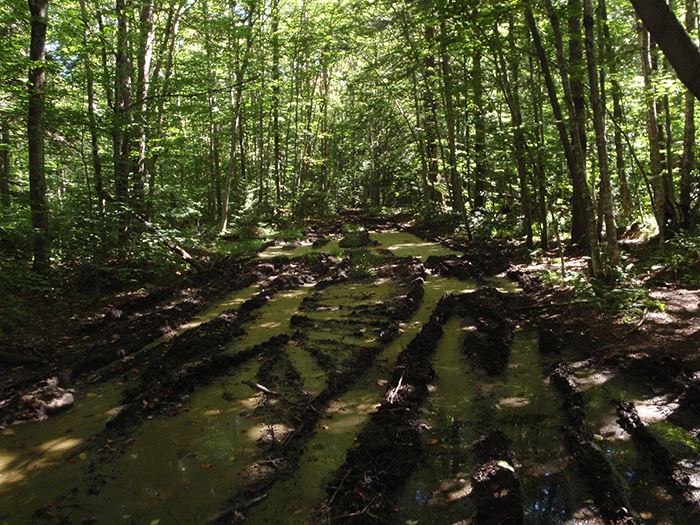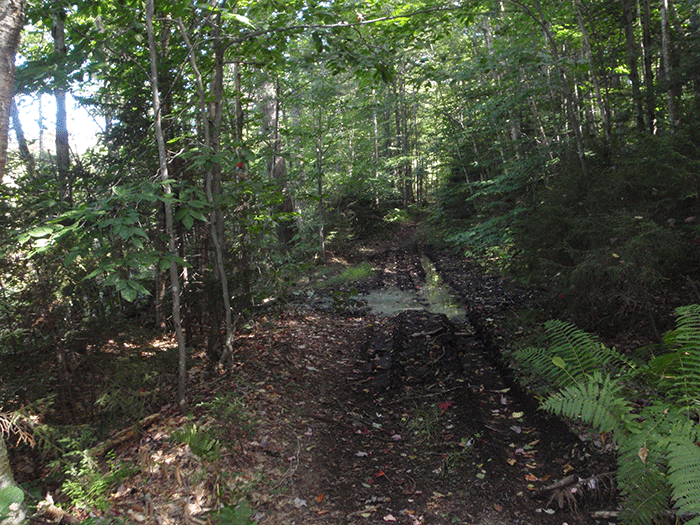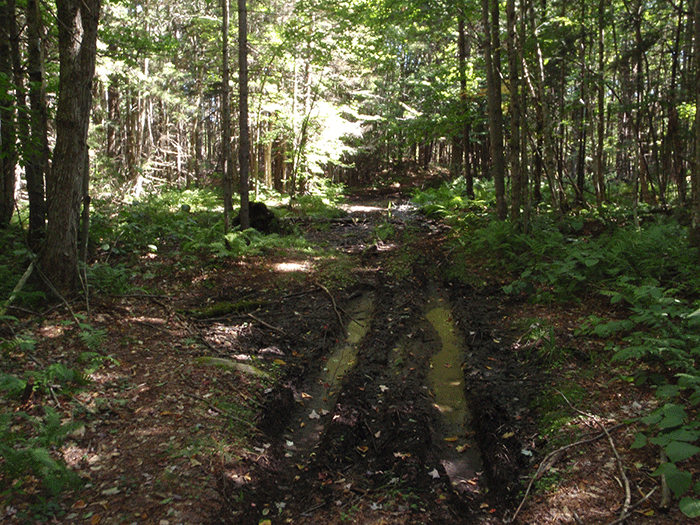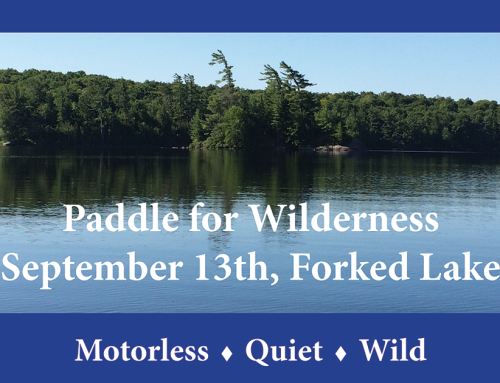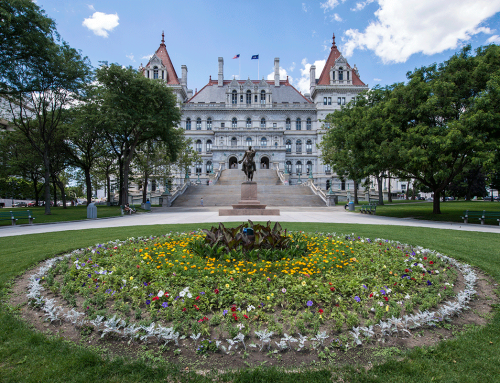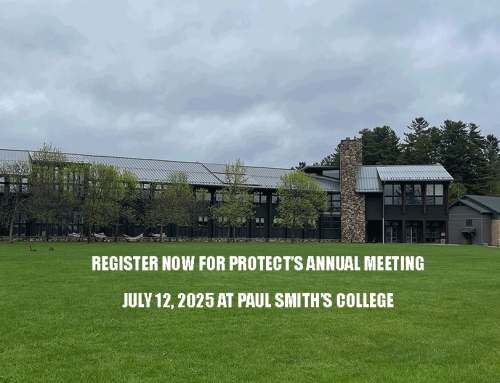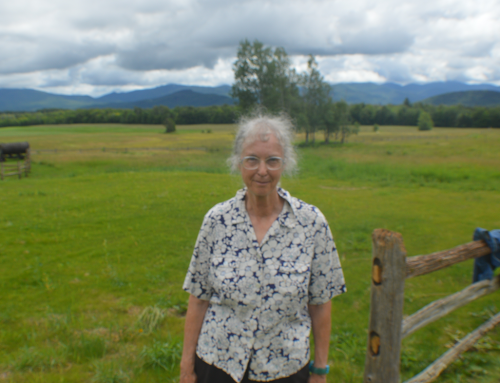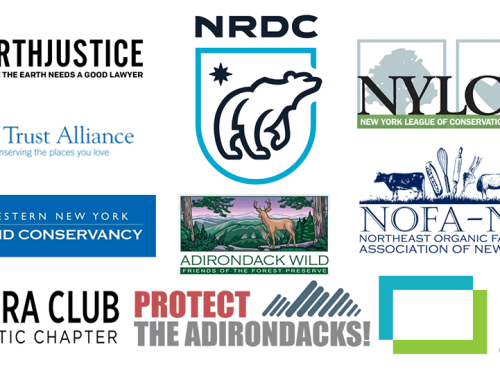UPDATE (September 14, 2014): Since the original publication of this post, which pinned the high level of damage to the Chub Pond Trail on illegal All Terrain Vehicle (ATV) use, a source within the Department of Environmental Conservation (DEC) stated that ATV damage to the Gull Lake Trail was caused by DEC staff and search and rescue volunteers using ATVs during a July 2014 search. Here’s a news link about the successful search effort. DEC has not released any public plans for rehabilitation of this trail.
People who visited the Chub Pond Trail in the Black River Wild Forest area reported that ATV damage was extensive prior to the DEC search and rescue effort this summer.
This post has been edited to reflect the causes of damage to this trail from both illegal and legal ATV use. Protect the Adirondacks sees the damage to this trail as an good illustration as to why ATVs should never be allowed for public recreational use on the Forest Preserve.
This post accompanies a post of equally jarring damage from both legal and illegal ATV use to the Gull Lake Trail, also within the Black River Wild Forest and connected to the Chub Pond Trail. The damage to the Gull Lake Trail stems from illegal use of ATV riders trespassing on the Forest Preserve and from DEC personnel and volunteers using ATVs during a search and rescue operation in July 2014.
The Chub Pond Trail runs about 3 miles from the Bear Creek Road to Chub Pond. It traverses a variety of wetlands and classic mixed upland northern hardwood forest. The trail is poorly marked with little signage to inform the public that ATV riding is illegal. Many parts of the trail are heavily rutted and wetland areas are damaged. The trail has been widened in many areas by ATVs where the go around large mud holes.
Here is a map of the area where the Chub Pond Trail is located.
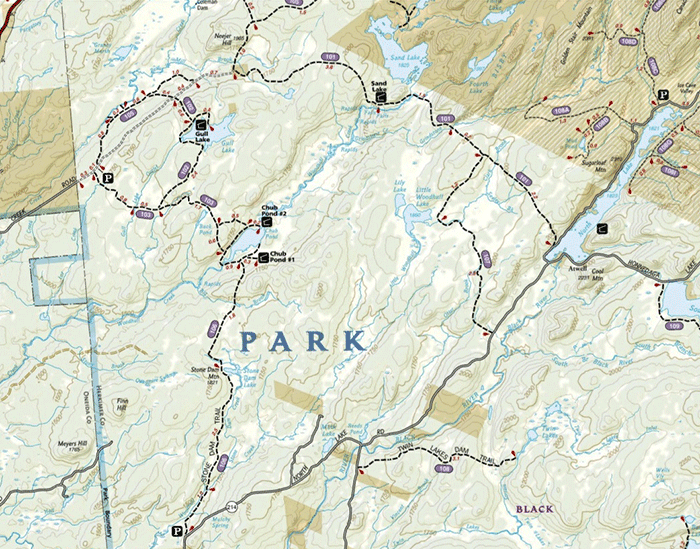
Map of a section of the Black River Wild Forest area where the Chub Pond is located. ATV use starts at the Bear Creek Road.
See PROTECT letter to the Department of Environmental Conservation and Adirondack Park Agency.
The ATV damage to Chub Pond Trail had all the signs of illegal trespass. ATV side-trails were visible around DEC gates. Signs were up stating no ATV use, but they are sometimes posted in places subject to illegal trespass. In many places these trails had been widened to 20-30 feet as ATV riders sought to avoid large mud holes. In places where the trail passed through a wetland, the narrow foot trail route of stepping stone and corduroy logs had been obliterated in a swamp of mud and deep ruts filled with a stew of thick green algae. In other places side trails had been created by ATVs leaving the trails altogether for an easier route around damaged areas. In many places, mud troughs several feet deep and wide were created from sustained use of ATVs crashing through them. These trails were difficult to hike and impossible to mountainbike in many places.
PROTECTÂ reported on extensive damage from illegal ATV use in a special report in 2003 and it’s highly unfortunate that in 2014 many of the places we catalogued in our report Rutted and Ruined: ATV Damage on the Adirondack Forest Preserve have not seen improvements, but rather have deteriorated. The Chub Pond Trail was rutted and ruined in 2003 and this abuse continues in 2014. The “forever wild” Forest Preserve deserves better.
What the whole incident shows is that ATV use is wholly inappropriate for the Forest Preserve. Many are pushing for ATVs to be allowed for public recreational use on the Forest Preserve. Many are pushing for even bigger Utility Track Vehicles (UTVs) on the Forest Preserve.
Yet, if trails can be destroyed by ATV use under the supervision of DEC professional staff, nothing better illustrates why ATVs should never be allowed in the Forest Preserve for recreational use.
DEC will say that this was a matter of life and death. In this light, any damage to the Forest Preserve is irrelevant and inconsequential. PROTECT agrees. Clearly search and rescue teams had to be transported as quickly and deeply into the Forest Preserve as possible at a point where every hour was critical. The longer one is lost, the greater the chances of severe injury or death.
Protect the Adirondacks has never opposed use of motor vehicles in the Forest Preserve during emergencies.
Yet, the residual ATV damage plainly evident today on these trails in the Black River Wild Forest area provides those of us who think about Forest Preserve management with a teachable moment. The lesson here is that recreational use of ATVs is incompatible with Forest Preserve protection and stewardship. These machines should only be used for emergency situations and should never be allowed for public recreational use.
PROTECT will continue its work to document the problems with ATV abuse of natural resources on the Forest Preserve.
ATV riders use public lands differently than other recreational users. The impacts are long lasting and often destroy opportunities for subsequent users. In essence, ATVs often cause considerable damage that destroys the outdoor experience for all who follow. Here’s a list of the particular impacts of ATV use on the Adirondack Forest Preserve.
1. ATV use destroys road and trail surfaces and Forest Preserve facilities, such as bridges, and cause soil and wetlands damage in ways that other motor vehicles do not.
2. ATV use creates deep ruts and mud pits on roads and trails that become impassable. It seems that ATVs are often ridden for the backwoods riding experience where one can make the mud fly and tear up an area. This damage makes a road difficult to travel for all other users.
3. Roads and trails are widened by ATV users to avoid a damaged, impassable area, which causes further damage to the corridor’s natural resources and wild character.
4. The wild forest character and the Forest Preserve experience are damaged by ATV use. Non-motor vehicle users that use the roads and trails damaged by ATVs find their Forest Preserve experience diminished as the roads are unattractive, deeply rutted, widened, and mud-filled swamps.
5. ATVs regularly leave designated roads to illegally blaze new trails through the Forest Preserve. ATV bushwhacking off roads is very destructive.
6. ATVs regularly trespass around gates and boulders that are erected to control motor vehicle traffic. ATVs can blaze trails through the forest to circumvent barriers in ways that other motor vehicles cannot.
7. ATVs regularly drive through streams, creeks and wetlands for sport rather than use bridges that provide motor vehicles with access over a stream, creek or wetland.
8. ATVs regularly trespass on snowmobile trails, designated roads that prohibit ATV use, and footpaths that intersect with roads. In short, ATV operators often go where they want.
9. ATV use has led to vandalism of Forest Preserve facilities, such as gates that control access.
These impacts are particular to ATVs. ATV damage remains widespread across the Forest Preserve due to illegal trespasses. In many Wild Forest units illegal trespassing by ATVs is widespread and continues unabated.
Neither the DEC nor the Adirondack Park Agency (APA) have ever been able to muster the political courage to state that ATVs are prohibited on the Forest Preserve as a public management policy or to codify this policy in official rules and regulations. It’s high time that they do so. ATVs should be officially banned from the Forest Preserve.
Below are a series of pictures from an August 2014 visit to the Chubb Pond Trail in the Black River Wild Forest area.
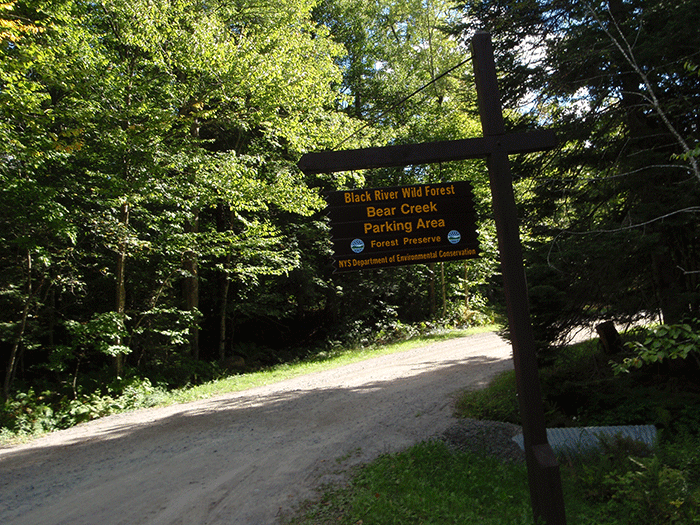
Public parking area at the end of the Bear Creek Road where it ends as a Town of Forestport Road and starts as a Forest Preserve Road. The Bear Creek Road is used by people who have private inholdings in the Forest Preserve. Many access their properties by ATVs. Use of ATVs by private inholders has encouraged widespread ATV trespassing in this general area. The Chub Pond Trail begins off of the Bear Creek Road.
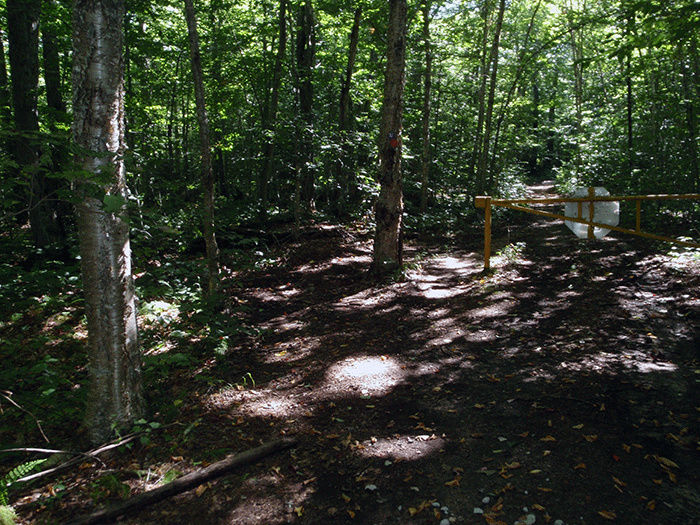
ATVs easily go around the left side of this gate. Despite a well work trail that shows frequent illegal use, no further actions have been taken by the DEC to stop this illegal use.
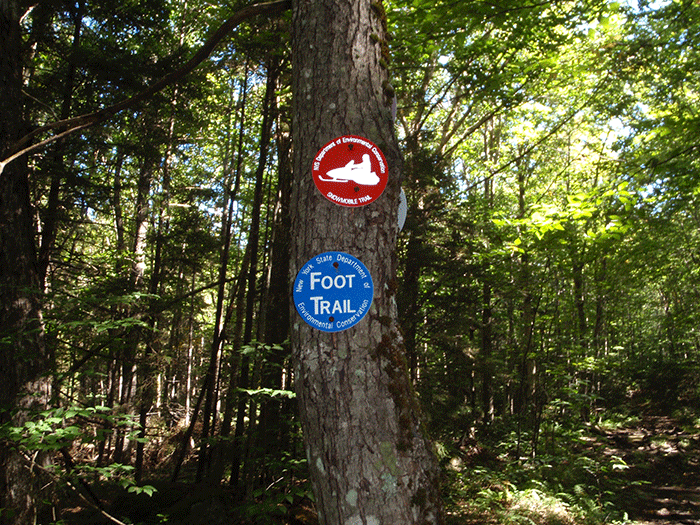
Trail markers clearly show that the Chub Pond Trail is only for snowmobiles and hiking. Under state law, the only motor vehicles allowed on a shared snowmobile and hiking trail is a snowmobile.
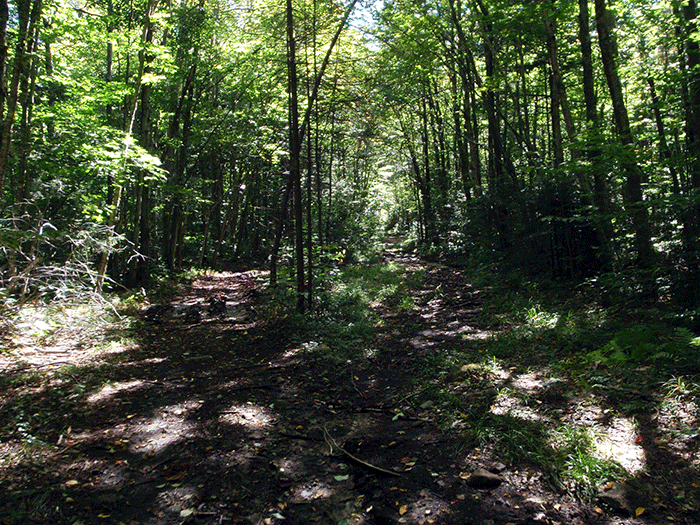
ATVs blaze their own trails. Here ATVs cut around a damaged section, widening the trail and causing more natural resource damage.
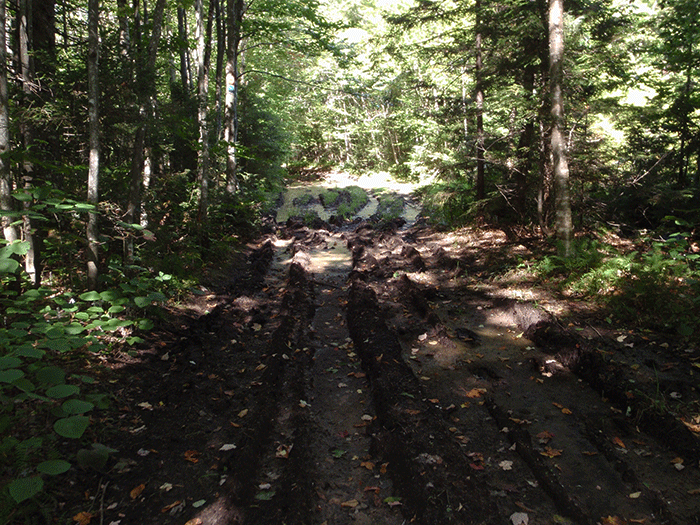
More extensive rutting and natural resource damage from illegal and DEC ATV use on the Chub Pond Trail.
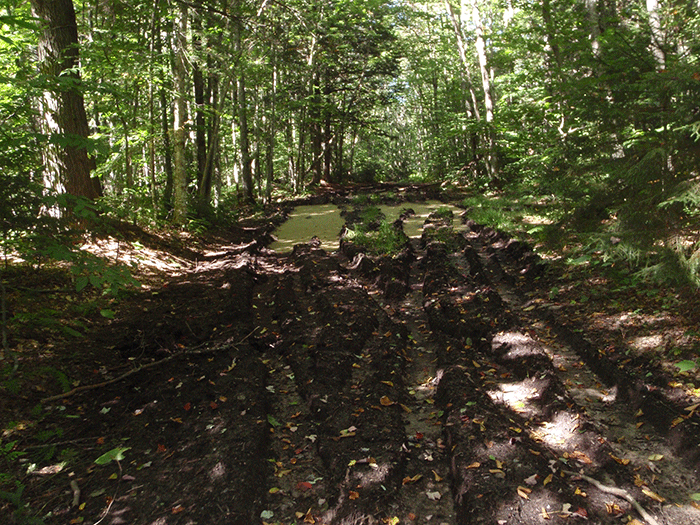
Another section of the Chub Pond Trail heavily damaged by illegal and DEC ATV use. This area has experienced extensive natural resource damage.
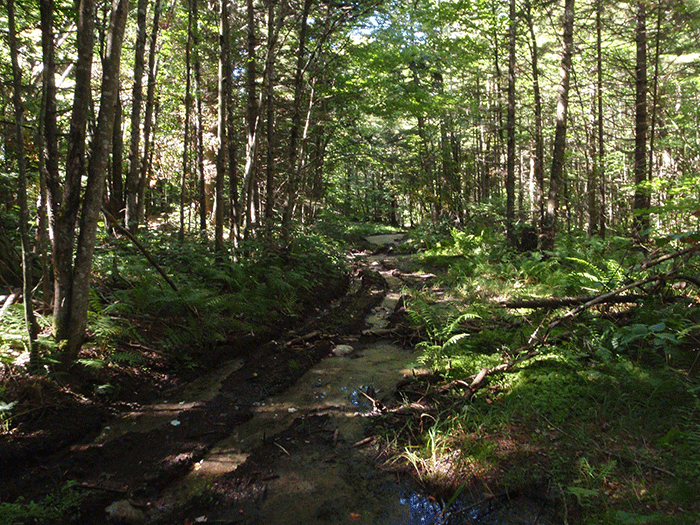
Still more natural resource damage to the Chub Pond Trail from damage due to illegal and DEC ATV use.
Like Us on Facebook!

